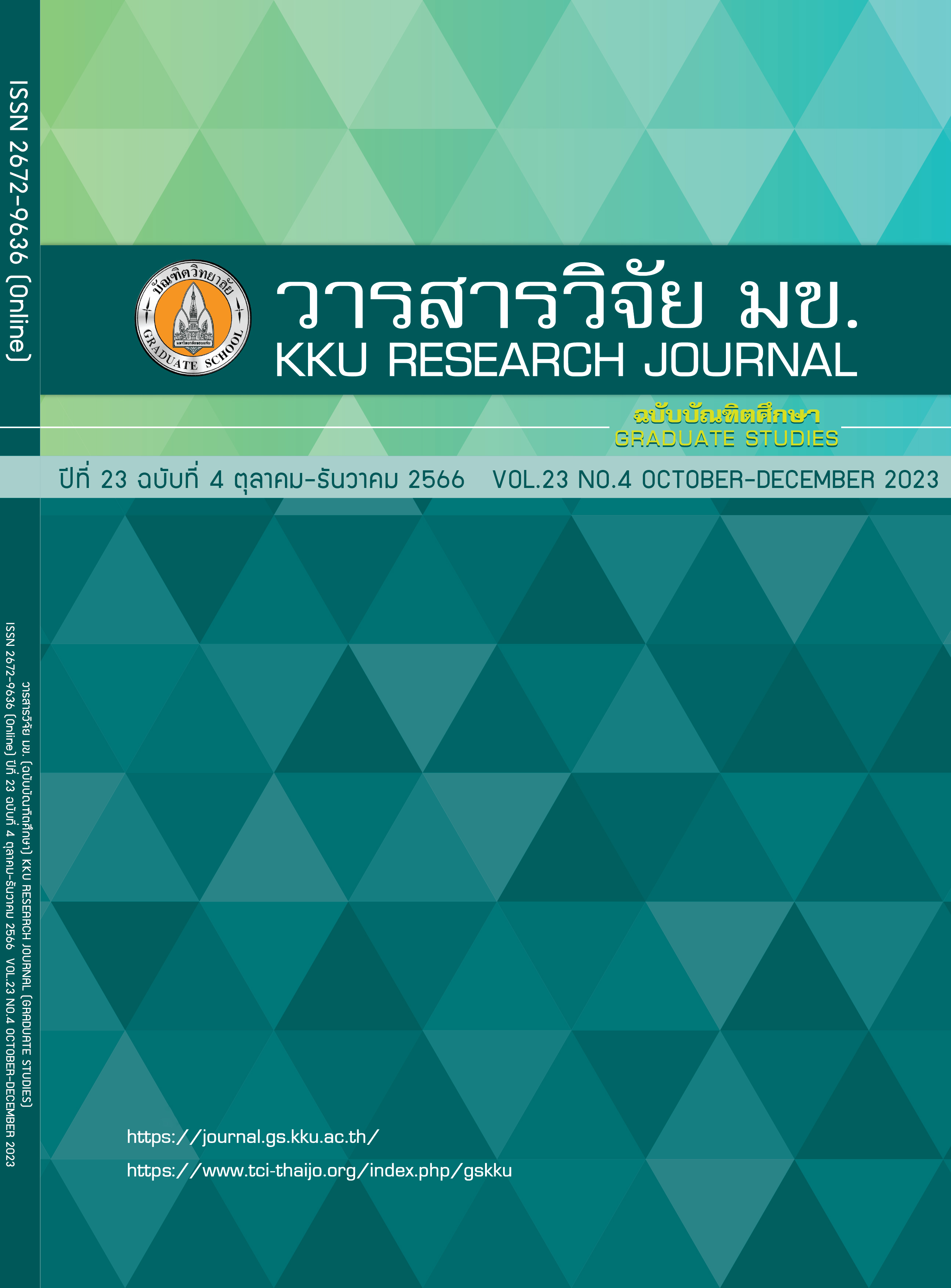Durability of Mortar Containing Original Fly Ash and Ground Ceramic Electrical Insulator in Ternary Blend Cementitious System
Keywords:
Fly ash, Ceramic electrical insulator, Ternary blend cementitious systemAbstract
This research presents a study of the compressive strength, porosity and the corrosion of mortar containing original fly ash (OFA) and ceramic electrical insulator powder (CEIP). Portland cement type 1 (CT) was partially replaced at 15% of OFA by weight of cementitious materials. In addition, OFA, CEIP and CT were used as a ternary blends cementitious system. Water to binder ratio (W/B) with constant of 0.50 was used. Superplasticizer (SP) was used to improve the workability of mortar. Test results found that the use of CEIP and OFA resulted in decreased compressive strength and porosity of mortars to increased. In addition, the resistant to the corrosion of mortar with 15% of CEIP+5% of OFA mortar is high in comparison with the mortar mixes at 15% of OFA by weight of cementitious materials.
References
Rukzon S, Chindaprasirt P. Strength, Chloride Penetration and Corrosion Resistance of Ternary Blends of Portland Cement Self-Compacting Concrete Containing Bagasse Ash and Rice Husk-bark Ash. Chiang Mai Journal Science. 2018; 5(4): 1863-1874.
Chindaprasirt P, Chottitanorm C, Rukzon S. Use of palm oil fuel ash to improve chloride and corrosion resistance of high-strength and high-workability concrete. Journal of Materials in Civil Engineering. 2011; 23(4): 499-503.
Chindaprasirt P, Rukzon S. Strength and chloride penetration of Portland cement mortar containing rice husk ash and ground river sand. Materials and Structures. 2015; 48(11): 3771-3777.
Rukzon S, Chindaprasirt P, Mahachai R. Effect of grinding on chemical and physical properties of rice husk ash. International Journal of Minerals, Metallurgy and Materials. 2009; 16(2): 242-247.
Chindaprasirt P, Sujumnongtokulb P, Posi P. Durability and mechanical properties of pavement concrete containing bagasse ash. Materials Today: Proceedings. 2019; 17: 1612-1626.
Chindaprasirt P, Kasemsiri P, Poomsrisa S, Posi P. Fluidized bed coalbark fly ash geopolymer with additives cured at ambient temperature. International Journal of GEOMATE. 2019; 16(54): 29-35.
Posi P, Kasemsiri P, Lertnimoolchai P, Chindaprasirt P. Effect of fly ash fineness on compressive, flexural and shear strengths of high strength-high volume fly ash jointing mortar. International Journal of GEOMATE. 2019; 16(54): 36-41.
Le Li, Qinxi Y, Mengcheng C, Wenfeng L. Waste ceramic powder as a pozzolanic supplementary filler of cement for developing sustainable building materials. Journal of Cleaner Production. 2020; 259(12): 120853.
Valdir MP, Rodrigo HG, Raphael B, Gladis C. Porcelain waste from electrical insulators in self-leveling mortar: Materials characterization and properties. Journal of Building Engineering. 2022; In press.
ASTM C430. Standard Method for Fineness of Hydraulic Cement by the 45 µm (No. 325) Sieve. ASTM Standard. 2005; 04.01: 242-244.
ASTM C33. Standard Specification Concrete Aggregates. Annual Book of ASTM Standards. 2005; 04.02: 10-20.
ASTM C136. Standard Test Method for Sieve Analysis of Fine and Coarse Aggregates. Annual Book of ASTM Standards. 2005; 04.02: 88-92.
ASTM C230. Standard Specification for Flow Table for use in Tests of Hydraulic Cement. Annual Book of ASTM Standard. 2005; 04.01: 206- 211.
ASTM C109. Standard Test Method for Compressive Strength of Hydraulic Cement Mortars (Using 2–in or [50 mm] Cube Specimens). Annual Book of ASTM Standards. 2005; 04.01: 76- 81.
ASTM C642. Standard Test Method for Density, Absorption, and Voids in Hardened Concrete. Annual Book of ASTM Standards. 2005; 04.02: 338-340.
Chindaprasirt P, Rukzon S, Sirivivatnanon V. Effect of carbon dioxide on chloride penetration and chloride ion diffusion coefficient of blended Portland cement mortar. Construction and Building Materials. 2008; 22(8): 1701-1707.
Chindaprasirt P, Rukzon S, Sirivivatnanon V. Resistance to chloride penetration of blended Portland cement mortar containing palm oil fuel ash, rice husk ash and fly ash. Construction and Building Materials. 2008; 22(5): 932-938.
MakaratAt N, Rukzon S, Chindaprasirt P. Effects of delay time and curing temperature on compressive strength and porosity of ground bottom ash geopolymer mortar. Journal of Metals, Materials and Minerals. 2021; 31(3): 134-142.
Rukzon S, Chindaprasirt, P. Strength and carbonation model of rice husk ash cement mortar with different fineness. Journal of Materials in Civil Engineering. 2010.;22(3):253-259.
Neville AM. Properties of concrete. 4th and Final Edition, Malaysia: Longman Group Limited. 1995.
ASTM C618. Standard Specification for Coal Fly Ash and Raw or Calcined Natural Pozzolan for Use as a Mineral Admixture in Concrete. Annual Book of ASTM Standard. 2005; 04.02: 323-325.
Chindaprasirt P, Rukzon S. Strength, porosity and corrosion resistance of ternary blended Portland cement, rice husk ash and fly ash mortar. Construction and Building Materials. 2008; 22(8): 1601-1606.
Rukzon S, Chindaprasirt P. Mathematical model of strength and porosity of ternary blend Portland rice husk ash and fly ash cement mortar. Computers and Concrete. 2008; 5(1): 75-88.
Rukzon S, Chindaprasirt P. Strength, porosity and chloride resistance of mortar using combination of two kinds of the pozzolanic materials. International Journal of Minerals, Metallurgy and Materials. 2013; 20(8): 808-814.
Rukzon S, Chindaprasirt P. Use of ternary blend of Portland cement and two pozzolans to improve durability of high-strength concrete. KSCE Journal of in Civil Engineering, 2014; 18(6): 1745-1752.
Downloads
Published
Issue
Section
License
Copyright (c) 2023 KKU Research Journal (Graduate Studies)

This work is licensed under a Creative Commons Attribution-NonCommercial-NoDerivatives 4.0 International License.



